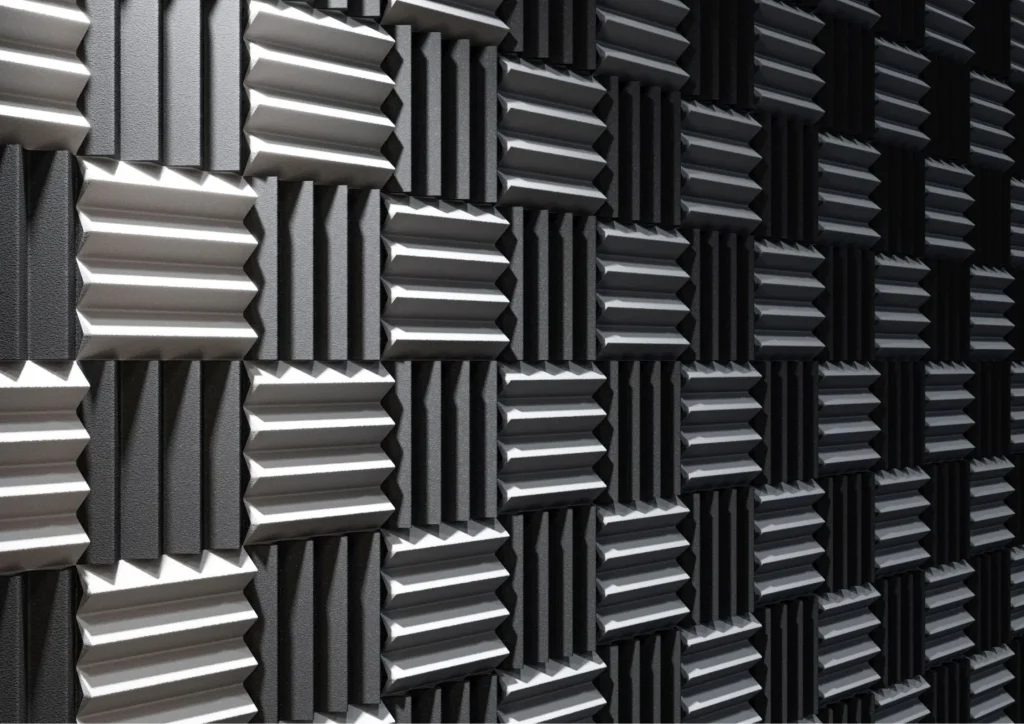In modern workplaces, the need for noise control for meetings has never been greater—especially in environments where meeting rooms are central to communication and collaboration. Whether you’re conducting strategic discussions, client presentations, or video calls, poor acoustics can sabotage the effectiveness of even the most important meetings.
In this guide, we’ll explore effective noise control for meetings, ensuring your spaces deliver optimal speech clarity, confidentiality, and professionalism.
Why Noise Control for Meetings Is Essential
Before diving into specific solutions, let’s explore why acoustic treatment for meeting rooms is so crucial:
- Speech intelligibility: Echoes and reverberation can make conversations difficult to follow.
- Privacy: Sound leakage can result in confidential conversations being overheard.
- Productivity: Excessive noise is a top complaint in open-plan offices.
- Professionalism: Poor acoustics during video calls leave a bad impression on clients and partners.
Without proper noise control for meetings, businesses risk reduced focus, communication errors, and a less professional environment.
Top Solutions for Noise Control in Meetings
Implementing effective noise control for meetings involves a combination of acoustic materials, layout planning, and soundproofing strategies.
1. Acoustic Panels
Acoustic panels absorb sound and reduce echo, improving speech clarity.
Benefits:
- Reduces reverberation and flutter echoes
- Improves clarity in conversations and video calls
- Visually appealing with design options
2. Soundproofing Meeting Rooms
Soundproofing focuses on blocking noise transfer, not just reducing echo.
Common Soundproofing Methods:
- Mass-loaded vinyl inside walls
- Solid-core doors with acoustic seals
- Acoustic glazing or double-pane windows
- Acoustic caulk to seal cracks and gaps
3. Sound Masking Systems
Sound masking introduces low-level ambient sound to enhance speech privacy without construction.
Ideal For:
- Open offices
- Adjacent rooms with thin partitions
- Workspaces needing flexible noise control
4. Carpet and Soft Furnishings
Soft materials help absorb high-frequency sound, making them great for basic meeting room noise control.
Examples:
- Carpet tiles with acoustic backing
- Upholstered furniture
- Fabric curtains or wall hangings
5. Acoustic Ceiling Tiles and Clouds
Ceilings are often overlooked but crucial in controlling vertical sound reflection.
Benefits:
- Enhance clarity in high-ceilinged rooms
- Integrate well with lighting and AV systems
- Improve conference call quality
6. Strategic Layout and Furniture Planning
Smart furniture placement enhances noise control for meetings naturally.
- Avoid glass partitions unless they’re acoustic-rated
- Place seating away from reflective walls
- Add bookshelves and dividers as sound barriers

Designing for Hybrid Meetings
With hybrid work on the rise, noise control for virtual meetings is crucial.
Best Practices:
- Use directional microphones with noise suppression
- Treat walls near cameras with acoustic panels
- Eliminate reverb to improve mic pickup
Measuring Acoustic Performance
To evaluate your meeting room noise control, consider professional testing for:
- Reverberation Time (RT60) – Ideal range: 0.4–0.6 seconds
- Speech Transmission Index (STI) – Measures clarity
- Sound Transmission Class (STC) – Rates soundproofing between spaces
Advanced Materials for High-Performance Meeting Rooms
For high-demand environments, consider:
1. Micro-Perforated Panels
Offer seamless design with effective broadband absorption.
2. Fabric-Wrapped Wall Systems
Enhance both acoustics and aesthetics, ideal for legal, medical, or financial firms needing professional environments.
Common Acoustic Challenges and Fixes
| Challenge | Noise Control Solution |
| Echo in small, hard-surfaced rooms | Acoustic panels, soft furnishings |
| Sound leakage in glass rooms | Acoustic window film, dividers |
| Flexible multipurpose spaces | Modular or movable acoustic panels |
AV Integration in Modern Meeting Rooms
Pairing AV systems with noise control for meetings boosts conferencing success.
Tips:
- Use ceiling-mounted directional mics
- Avoid AV equipment near reflective surfaces
- Add echo-canceling speakers
Budget-Friendly Noise Control for Meetings
If you’re working within a budget:
- DIY acoustic panels (rockwool + fabric)
- Acoustic door sweeps and gasket kits
- Sound-dampening paint
- Area rugs and thick curtains
Industry-Specific Needs
| Industry | Key Considerations |
| Healthcare | HIPAA privacy, sound masking |
| Finance | High STC walls, solid-core doors |
| Creative/Tech | Combine design with function |

Long-Term ROI of Meeting Room Noise Control
Investing in noise control for meetings provides:
- Clearer communication
- Improved client perception
- Employee well-being
- Fewer errors in high-stakes discussions
Partnering with Acoustic Experts
Working with acoustic consultants ensures optimized, code-compliant, and brand-aligned results.
What You Get:
- Full acoustic assessment (RT60, STI, STC)
- Customized solutions
- Professional installation and documentation
Quick Reference Checklist
| Problem | Recommended Solution |
| Echo | Acoustic panels, ceiling clouds |
| Sound leaks | Soundproof walls, windows, doors |
| Distractions | Sound masking |
| Bad video call audio | Acoustic treatment near mics |
| Style + function | Designer panels, soft furniture |
Final Thoughts
Noise control for meetings is no longer optional—it’s essential for workplace efficiency, privacy, and professionalism. Whether you’re optimizing a boardroom or upgrading a video conference space, thoughtful acoustic design makes all the difference.
At SoundKrafted, we specialize in noise control for meetings that balance high performance with modern design. Contact us today for a free consultation and discover how our tailored solutions can improve your communication spaces.

